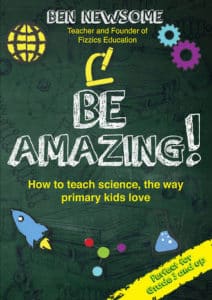
Making it stand out!
Go to any primary classroom or high school science lab and you’re bound to find a number of science posters stuck around the room. Often, these science posters are taken from newspaper lift outs or freely provided posters from a classroom science supplier. Whilst these posters are great (we’ve got some hanging around our office too!), your students could also be creating science posters that effectively communicate their knowledge of the science topic you’re studying too!
Presenting the context to students doesn’t just have to be as part of an assessment component; the ability to create a science poster is an important skill for scientists wishing to summarize their research findings at conferences to attract discussion or even win funding for further research! So with this in mind, the following lists some ideas that students can use to help out their thoughts together…
1. Make the content obvious

What makes a boat float – a primary informational poster presented at the Peninsula Community of Schools STEM event in 2016
Can the audience work out what the content is about with a glance? If your audience can’t work out what your science poster is about in less than 10 seconds perhaps your students will need to revise how they are presenting their content.
2. Know your audience
With the above in mind, who is the student’s audience anyway? Is the audience the general public, a group of academics, their fellow classmates, an assessing teacher… who is it? From here they can tailor their message to suit the audience’s needs using just a few simple questions:
– how educated is the audience?
– what is the background of the audience?
– what would make the audience want to read the science poster?
– what is the outcome they’re trying to achieve?
This is the heart of science communication in many ways… your student’s science poster should be specifically made to communicate their message in the most effective way – even if it is just to your own class!
3. Font size matters!
I KNOW SCIENCE STUFF
I KNOW SCIENCE STUFF
I KNOW SCIENCE STUFF
I KNOW SCIENCE STUFF
I KNOW SCIENCE STUFF
I KNOW SCIENCE STUFF
Which font size above works for you? Work on the idea that if you can’t read the poster from 4 meters away the science poster is likely to have less impact. Perhaps your students are trying to squish too many words in? Keep the font consistent and use headlines & bullet points where appropriate too.
4.More imagery, fewer words

Primary robotics poster at the Peninsula Community of Schools STEM event in 2016
What would rather check out… a block of text or images? Such a simple question but this really is the key to a good science poster. Yes, you need to convey important data however a science poster needs to grab the attention first. Your students could use graphs, tables or even use free infographic builders such as Canva or Piktochart to make their method easily understood.
5. Acknowledgements are important
Who contributed to your research? Did anyone fund the research? Where did the research occur? Even at the school level, your students should mention who they worked with and where they got their information.
6. Sometimes, simple is best!

Microbes poster at Mt Keira Demonstration School
The poster above was an artistic way that upper primary students chose to present their vocabulary list. To the side of the scientists were booklets that the students had created with dossier pages on bacteria, viruses, fungi, algae and more. Highly effective and the interactivity prompted further investigation… it certainly was a fantastic classroom poster to see whilst visiting the school on a digital microscopy incursion!
Putting a science poster in part of an assessment task needn’t be dreary either. Maybe your students could compete against each other in using their science poster to win a pretend pitchfest in a classroom version of Dragon’s Den or Shark Tank? With the right rules in place and a set marking rubric this certainly could be a bit of fun and would drive students forward to create some fantastic posters!
Happy teaching,
NEW Primary science teaching book!
“Be Amazing! How to teach science, the way primary kids love”





























Comments